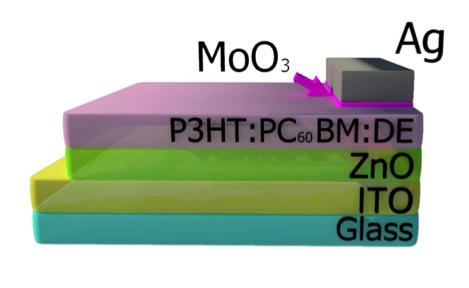
Since the Jurassic period, diatom algae have adapted an intricate silica cell wall to manipulate light to optimize their photosynthesis process. Lyndsey McMillon-Brown, a graduate student in the Taylor lab, and co-workers have incorporated earth abundant and low cost fossilized diatom algae remains into organic solar cells and observed a 30% relative increase in light to energy conversion. Their work, the first demonstration of diatomaceous earth as a polymer solar cell active layer additive, has just been published in the December issue of Organic Electronics.
Light-trapping in polymer solar cells by processing with nanostructured diatomaceous earth
L McMillon-Brown, M Mariano, YL Lin, J Li, SM Hashmi, A Semichaevsky, BP Rand, AD Taylor
DOI: 10.1016/j.orgel.2017.09.009
Abstract:
We demonstrate the use of fossilized diatoms (diatomaceous earth) as light traps in regioregular poly(3-hexylthiophene) (P3HT) and fullerene derivative [6,6]-phenyl-C60-butyric acid methyl ester (PCBM) solar cells. Diatoms, the most common type of phytoplankton found in nature, are optimized for light absorption through millions of years of adaptive evolution. They are also an earth-abundant source of silica that can be incorporated into polymer solar cells without the need for complicated processing. Here we establish protocols dispersing the diatomaceous earth throughout the P3HT:PCBM active layer with characterization by optical and current-voltage measurements. We show that through the addition of diatomaceous earth, we can achieve the same power conversion efficiencies as standard thickness cells while using 36% thinner active layers. We find that adding the diatomaceous earth acts as a scattering center and textures the silver back contact, contributing to increases in the optical path length within devices. Results from this study open up pathways for incorporating hierarchical materials from nature into energy conversion devices.